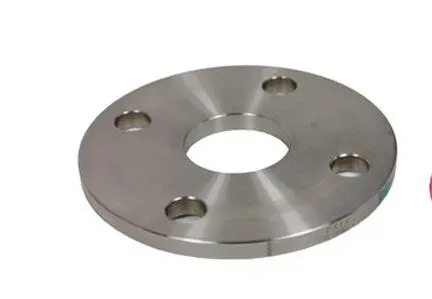-
Cangzhou Yulong Steel Co., Ltd.
-
Phone:
+86 13303177267 -
Email:
admin@ylsteelfittings.com
- English
- Arabic
- Italian
- Spanish
- Portuguese
- German
- kazakh
- Persian
- Greek
- French
- Russian
- Polish
- Thai
- Indonesian
- Vietnamese
- Zulu
- Korean
- Uzbek
- Hindi
- Serbian
- Malay
- Ukrainian
- Gujarati
- Haitian Creole
- hausa
- hawaiian
- Hebrew
- Miao
- Hungarian
- Icelandic
- igbo
- irish
- Japanese
- Javanese
- Kannada
- Khmer
- Rwandese
- Afrikaans
- Albanian
- Amharic
- Armenian
- Azerbaijani
- Basque
- Belarusian
- Bengali
- Bosnian
- Bulgarian
- Catalan
- Cebuano
- China
- China (Taiwan)
- Corsican
- Croatian
- Czech
- Danish
- Esperanto
- Estonian
- Finnish
- Frisian
- Galician
- Georgian
- Kurdish
- Kyrgyz
- Lao
- Latin
- Latvian
- Lithuanian
- Luxembourgish
- Macedonian
- Malgashi
- Malayalam
- Maltese
- Maori
- Marathi
- Mongolian
- Myanmar
- Nepali
- Norwegian
- Norwegian
- Occitan
- Pashto
- Dutch
- Punjabi
- Romanian
- Samoan
- Scottish Gaelic
- Sesotho
- Shona
- Sindhi
- Sinhala
- Slovak
- Slovenian
- Somali
- Sundanese
- Swahili
- Swedish
- Tagalog
- Tajik
- Tamil
- Tatar
- Telugu
- Turkish
- Turkmen
- Urdu
- Uighur
- Welsh
- Bantu
- Yiddish
- Yoruba

Nov . 24, 2024 08:19 Back to list
connecting galvanized pipe
Connecting Galvanized Pipe A Comprehensive Guide
Galvanized pipe, known for its durability and corrosion resistance, has been a popular choice for plumbing and other piping applications for decades. It is creating a robust infrastructure in construction, water supply, and HVAC systems. Understanding how to connect galvanized pipes properly is crucial for ensuring the longevity and efficiency of your plumbing system. This article provides a detailed overview of connecting galvanized pipes, including necessary tools, techniques, and tips for successful installation.
Understanding Galvanized Pipe
Before diving into the connection methods, it's essential to understand what galvanized pipes are. These pipes are coated with a layer of zinc to prevent rust and corrosion, which is particularly critical in environments with high moisture levels. Galvanized pipes are commonly used for water supply lines, exterior construction projects, and in some cases, for gas lines. Over time, however, the inside of these pipes can accumulate rust, leading to reduced flow and water quality.
Tools and Materials Needed
To connect galvanized pipes effectively, you'll need various tools and materials, including
1. Pipe Wrenches Essential for gripping and turning the pipes. 2. Pipe Cutters For cutting pipes to the desired length. 3. Thread Sealant To prevent leaks in threaded connections. 4. Teflon Tape An alternative to sealant for threaded connections. 5. Adapters and Fittings Necessary for connecting different sizes or types of pipes. 6. Sandpaper or Wire Brush For cleaning the threads and pipe ends before connection.
Connection Methods
There are several techniques to connect galvanized pipes based on the intended use and the specific circumstances of your project
.connecting galvanized pipe

1. Threaded Connections - Most commonly, galvanized pipes are connected using threaded fittings. - To create a threaded connection, first, ensure that the ends of the pipes are cut cleanly and deburred. - Apply Teflon tape or thread sealant to the male threads, which will prevent leaks when the fittings are screwed together. - Using the pipe wrench, tighten the connection securely, but be cautious not to overtighten, which can damage the pipes.
2. Couplings - When connecting two lengths of pipe, couplings are often used. - A coupling is a short piece of pipe with female threads at both ends, designed to join two male-threaded pipes. - Follow the same procedures for sealing the threads mentioned earlier.
3. Flanged Connections - For applications that require frequent disassembly, flanged connections are ideal. - This involves attaching flanges to the ends of two pipes, which are then bolted together. - Gaskets are used between the flanges to create a seal, preventing leaks.
4. Soldering and Welding - While less common for galvanized pipes, soldering can be used for smaller applications, particularly when connecting to copper pipes. - It is crucial to remove the galvanization from the soldering area to ensure a strong bond.
Considerations
When connecting galvanized pipe, there are several considerations to keep in mind
- Expansion and Contraction Galvanized pipes may expand and contract due to temperature changes. Ensure there is enough slack in the system to accommodate this movement. - Corrosion Over time, the inside of galvanized pipes can corrode, especially in areas with hard water. Regular inspections and maintenance are important. - Compatibility with Other Materials Be cautious when connecting galvanized pipes to other types of materials (like PVC or copper), as different metals can cause galvanic corrosion. The use of dielectric unions can help prevent this.
Conclusion
Connecting galvanized pipe may seem daunting, but with the right tools, techniques, and careful planning, anyone can do it successfully. By understanding the various connection methods and considerations involved, you can ensure a leak-free and efficient plumbing system that stands the test of time. Whether you're a seasoned professional or a DIY enthusiast, mastering the art of connecting galvanized pipe is a valuable skill in any construction or plumbing project.
Latest news
-
ANSI 150P SS304 SO FLANGE
NewsFeb.14,2025
-
ASTM A333GR6 STEEL PIPE
NewsJan.20,2025
-
ANSI B16.5 WELDING NECK FLANGE
NewsJan.15,2026
-
ANSI B16.5 SLIP-ON FLANGE
NewsApr.19,2024
-
SABS 1123 FLANGE
NewsJan.15,2025
-
DIN86044 PLATE FLANGE
NewsApr.19,2024
-
DIN2527 BLIND FLANGE
NewsApr.12,2024
-
JIS B2311 Butt-Welding Fittings LR/SR 45°/90° /180°Seamless/Weld
NewsApr.23,2024











